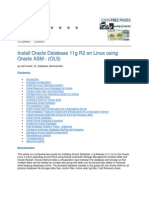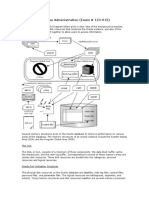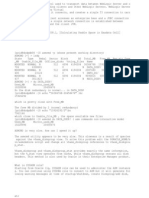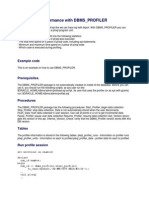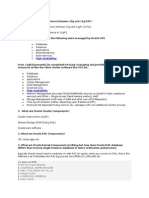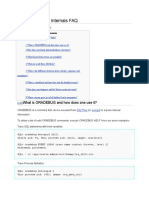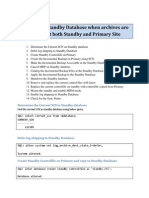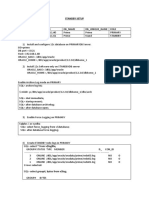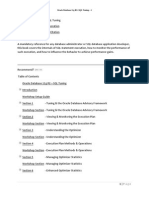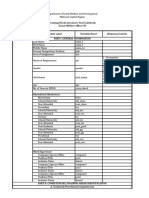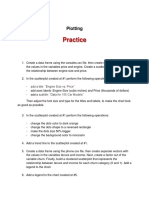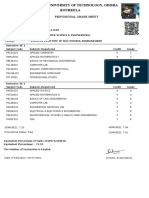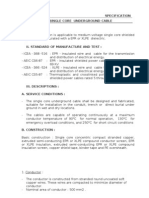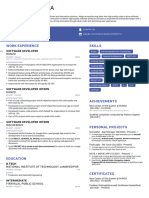0% found this document useful (0 votes)
262 views30 pagesSQL Tuning for Database Professionals
The document provides an overview of Dean Richards' proven process for SQL tuning. It introduces Dean as an experienced DBA and discusses the challenges of SQL tuning. The process involves identifying poorly performing SQL statements, gathering detailed metrics and execution plans about the statements, and then tuning the statements through case studies and ongoing monitoring. The document outlines each step of the process and provides examples to illustrate how to analyze a SQL statement and its related objects, metrics, and execution plan.
Uploaded by
Murad AmroCopyright
© Attribution Non-Commercial (BY-NC)
We take content rights seriously. If you suspect this is your content, claim it here.
Available Formats
Download as PPT, PDF, TXT or read online on Scribd
0% found this document useful (0 votes)
262 views30 pagesSQL Tuning for Database Professionals
The document provides an overview of Dean Richards' proven process for SQL tuning. It introduces Dean as an experienced DBA and discusses the challenges of SQL tuning. The process involves identifying poorly performing SQL statements, gathering detailed metrics and execution plans about the statements, and then tuning the statements through case studies and ongoing monitoring. The document outlines each step of the process and provides examples to illustrate how to analyze a SQL statement and its related objects, metrics, and execution plan.
Uploaded by
Murad AmroCopyright
© Attribution Non-Commercial (BY-NC)
We take content rights seriously. If you suspect this is your content, claim it here.
Available Formats
Download as PPT, PDF, TXT or read online on Scribd
/ 30











